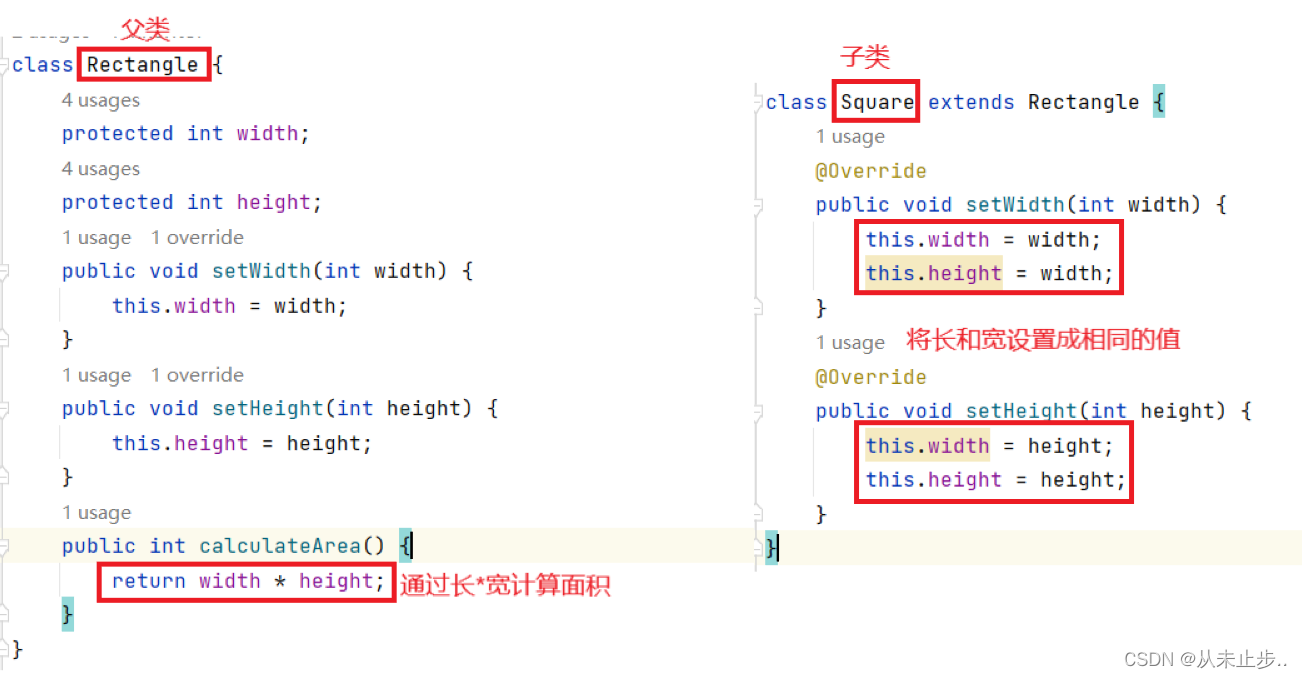里氏替换原则(Liskov Substitution Principle)是面向对象设计中的一个基本原则,它是由Barbara Liskov提出的。
如果对于每一个类型为Apple的对象1,都有类型为fruit的对象2,使得以fruit定义的所有程序 P 在所有的对象1都替换成2时,程序 P 的行为没有发生变化,那么类型 Apple是类型 fruit 的子类型。
简单点说就是子类可以替换父类并且不会影响程序的正确性,这个原则强调了子类的可替换性和灵活性。
举例:
package Reaplcetest;
class Rectangle {
protected int width;
protected int height;
public void setWidth(int width) {
this.width = width;
}
public void setHeight(int height) {
this.height = height;
}
public int calculateArea() {
return width * height;
}
}
class Square extends Rectangle {
@Override
public void setWidth(int width) {
this.width = width;
this.height = width;
}
@Override
public void setHeight(int height) {
this.width = height;
this.height = height;
}
}
public class LiskovSubstitutionPrincipleExample {
public static void main(String[] args) {
//将子类对象Square的值赋值给父类对象rectangle
Rectangle rectangle = new Square();
rectangle.setWidth(5);
rectangle.setHeight(10);
System.out.println("Area: " + rectangle.calculateArea()); // 输出 100,而不是预期的 50
}
}
上述实例违背了里氏替换原则,如下所示:

使用子类对象square的值赋值给rectangle对象,程序出现了错误的计算结果,因此子类对象没有完全代替父类对象的行为,违背了里氏替换原则
//该调用顺序下---输出100
rectangle.setWidth(5);
rectangle.setHeight(10);
//该调用顺序下---输出25
rectangle.setHeight(10);
rectangle.setWidth(5);